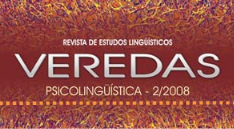1) Processos bottom-up e top-down no rastreamento ocular de imagens
Resumen
Inglês: This article reports an eye-tracking experiment in which 27 subjects were exposed during 10 seconds to versions of an image which contained either a [- animate – human], a [+animate - human] or a [+animate +human] element. Each version could be preceded or not by written information which remained on the screen during 5 seconds, indicating the topic of the image. Fixation times and saccadic movements (on-line measures) were registered and subjects were also asked to write a one-paragraph report (off-line measure) immediately after viewing the scene. Based on the results obtained it is suggested that the previously presented topics (top-down effect) may influence the off-line measure, but cannot override the bottom-up computation of salient elements in the input in the on-line measures.Key-words: Psycholinguistics; Eye-movements in scene viewing; Top-down and bottom-up effects.
Tradução: O artigo reporta experimento de monitoramento ocular de imagens em que 27 sujeitos foram expostos durante 10 segundos a versões de imagem que continham, respectivamente, elementos [-animado -humano], [+animado - humano] ou [+ animado + humano]. Cada versão podia ser precedida ou não de informação escrita presente na tela por 5 segundos, indicando o tema da imagem. Cada sujeito reportava, então, o que havia visto, registrando-se fixações e movimentos sacádicos (medidas on-line), bem como a reportagem final (medida off-line), concluindo-se que os tópicos previamente apresentados (efeito top-down), embora influenciem a medida off-line, não sobrepujam os traços estruturais salientes (bottom-up), na varredura on-line.
Palavras-chave: Psicolingüística; Rastreamento ocular de imagens; Efeitos top-down e bottom-up.
Descargas
Los datos de descargas todavía no están disponibles.

